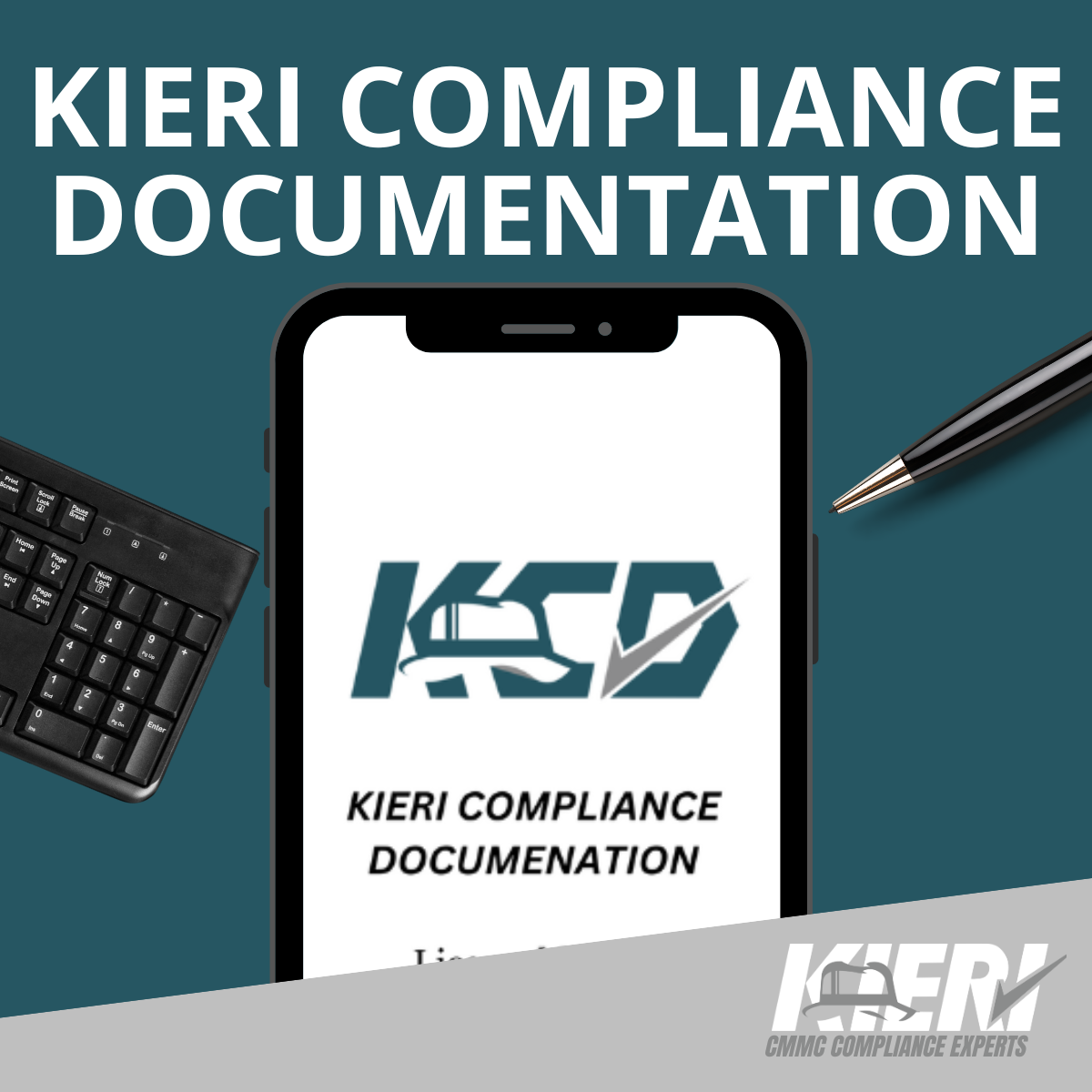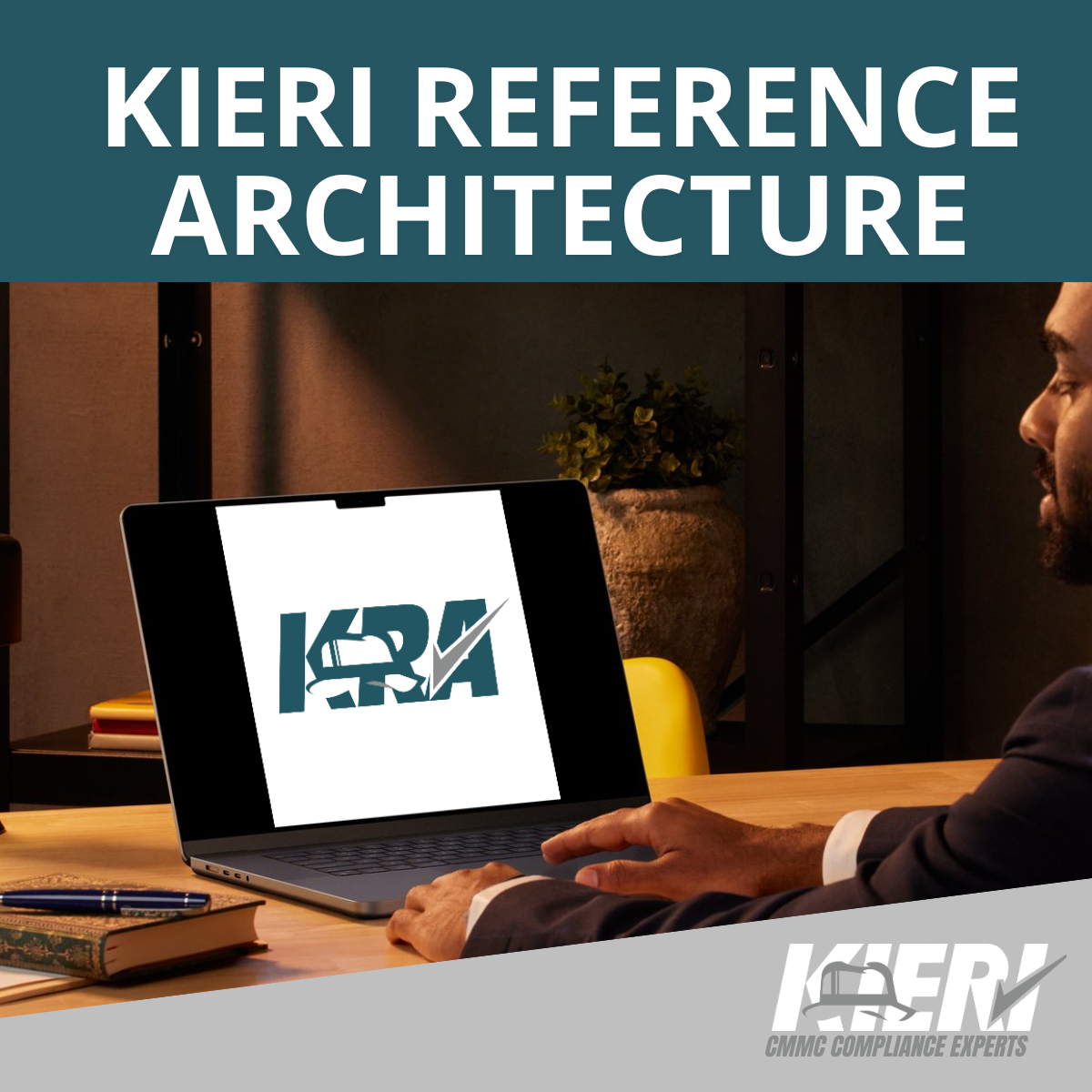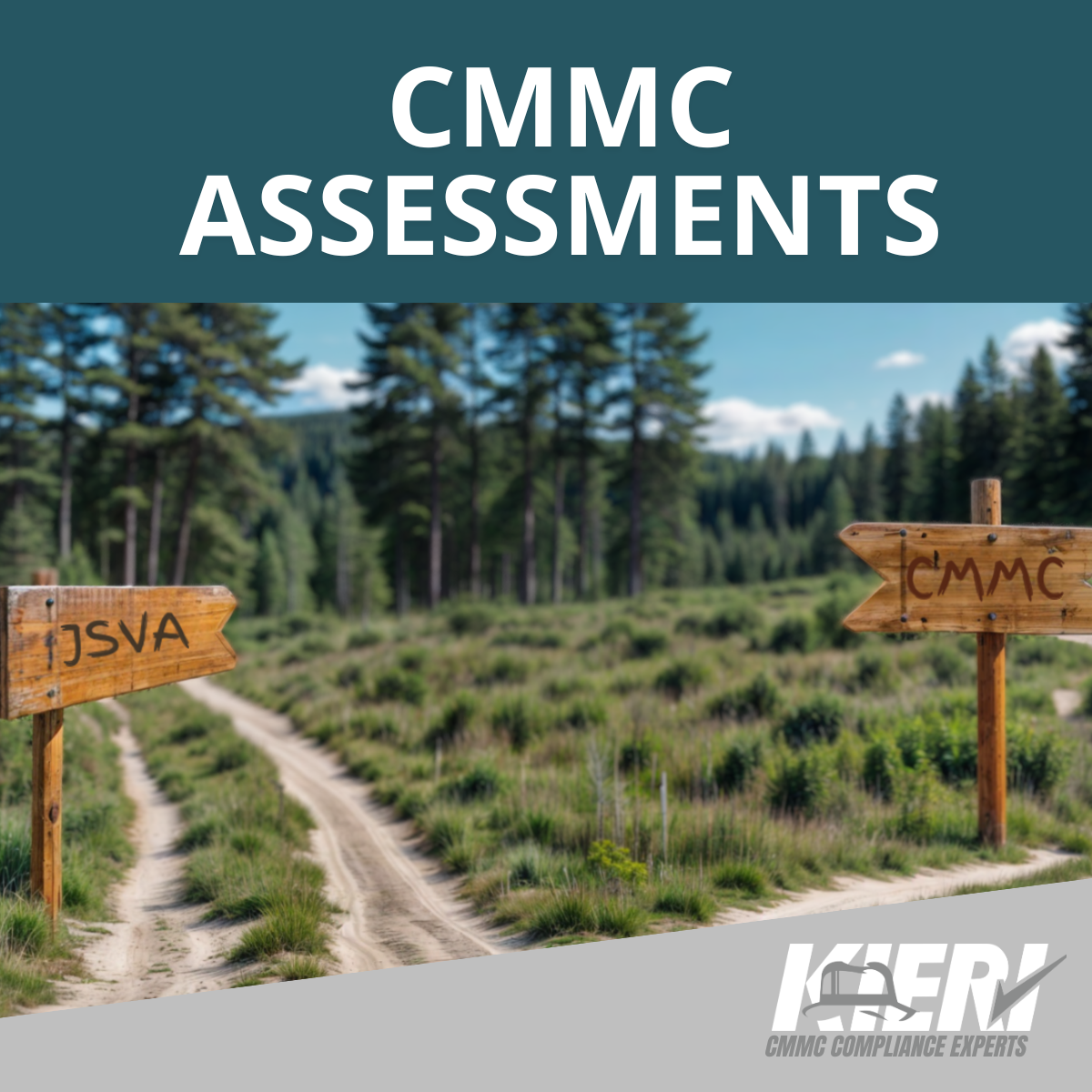Log in
KCD Demo Webinar
Part 1 - Overview
Part 2 - Actual documents
Part 3 - Implementing
Kieri Solutions offers a licensable set of NIST SP 800-171, DFARS 252.204-7012, and CMMC compliance templates called the Kieri Compliance Documentation (KCD). This is a holistic and user-friendly cybersecurity program which is designed for small and medium networks.
Why is the KCD different from all other compliance documentation products?
The KCD does three key things differently:
1) Behavior stacking – This is a critical principle for building new habits. Essentially, you need a trigger to remind you to do compliance tasks. As we wrote the KCD and identified best practice methods to meet each requirement, we linked each action to a scheduled activity. Under our program, your IT department only needs to remember to start a weekly maintenance task and the rest follows with just-in-time procedures and reminders.
2) No blanks – We don’t think it is fair to give you empty templates and hope you “figure it out.” Instead, our compliance templates are fully written for a functional, small, IT department that is performing all the requirements for CMMC Level 2. You can model your efforts to these best practices, or modify them to fit you. Our clients (including Fortune 500 companies) tell us that the examples in the KCD and our training library are a masterclass on how to perform CMMC efficiently.
3) Actionable statements – You won’t see regurgitations of the requirements like “The organization identifies authorized users, processes, and devices” in the KCD anywhere. That doesn’t help companies pass their assessment. Instead, the KCD says HOW each requirement is performed: “We identify authorized users by following the process for new user onboarding in Administrative Processes, Section 2.1. The CIO authorizes the user after reviewing their Account Request Form, background screening, training, and user agreements, to ensure they meet requirements for access. All authorized users and their authorizations are tracked in the Account Management Database.” Isn’t that a better way to do things?
The KCD provides a kick-start for companies that don’t have compliant policies, procedures, system security plan, and user agreements because it is pre-written with reasonable best practices and gives prescriptive (but easily customizable) instructions on how to perform each requirement. This program emphasizes record-keeping and processes that generate proof that they are performed over time.

I would like more information…
What Our Clients Say About The KCD Package
1. All the documents your IT department needs to perform NIST SP 800-171 and CMMC Level 2 compliance.

(screenshot of library from April 2024)
2. Training library with 40+ hours of videos and newsletters

(screenshot library from April 2024)
3. Support from Kieri Solutions experts
Each month, we invite our subscribers to live recorded Q&A sessions. We also publish a monthly newsletter with the latest news about CMMC and useful reminders.
Each license comes with three free check-ins with our team. Talk with an expert 1-on-1. Happy to discuss any 800-171, DFARS 252.204-7012, or CMMC topic. If you’d like, we can also add customization services or additional consulting to get you compliant faster!
You will be speaking with Certified CMMC Assessors who have experience in real CMMC assessments and helping companies comply with CMMC. We are carefully watching CMMC’s progression and will give you the information you need to prepare smartly.
KCD Customization Services
If you decide to buy a KCD License, we strongly encourage you to add-on customization services from Kieri. It is an incredible value and help to get businesses started. Here’s why:
Our typical customization engagement is 25 hours. We start with an empty Plan of Action and work through each document line-by-line with you. We explain why the document says what it does and clear up any confusion about the 800-171 requirement at its core. Then we review if you’re performing the requirement well enough already. If yes, we customize to fit and move on. If not, we add the remediation task to your Plan of Action as we continue to shape your compliance program for you.
Why is this a big deal? You’ll get a very informal (not verifying evidence) Gap Analysis from our assessor at the same time as you fix your documentation!! We also give you a double-check on whether your implementations (even the technical ones) are good enough to pass an assessment!
By the end of our meetings, you will be far more knowledgeable about what is left to implement CMMC compliance for your organization, after you’ve got your policies and procedures and and other documentation fixed.
If you prefer to go it alone, you’ll still succeed, don’t worry – most of the happy customer quotes on this page are from people that only purchased a KCD license. It will just take a bit longer.
The Kieri Compliance Documentation is unique
The KCD is the ONLY set of CMMC compliance templates that is pre-written with best-practice sample answers and instructions for every requirement. Our clients tell us that the KCD:
1) keeps them from over-thinking requirements,
2) meshes together policy, procedure, databases, and system security plan in an efficient, repeatable way,
3) is a master-class on how to succeed at CMMC Level 2.
The KCD comes with the full support of the Kieri team. We want you to pass your CMMC assessment! Included is a full library of training videos, monthly newsletters, Ask Me Anything webinars, and three free check-ins with our practicing CMMC / 800-171 assessors.
The KCD is battle-tested: we used this program to pass our CMMC assessment by the DoD. Right now, more than a hundred companies are using the KCD to become and remain compliant with NIST SP 800-171 and CMMC Level 2.
Request a quote or a demo for the KCD!
FAQs about the Kieri Compliance Documentation
What about NIST SP 800-171 Rev. 3 ???
We are already updating the KCD to incorporate the Rev.3 changes!!
When you purchase a license, you get a free 12 month subscription to updates. We are already building the updated set of documentation. So don’t worry, the KCD will support both Rev. 2 and Rev. 3!




